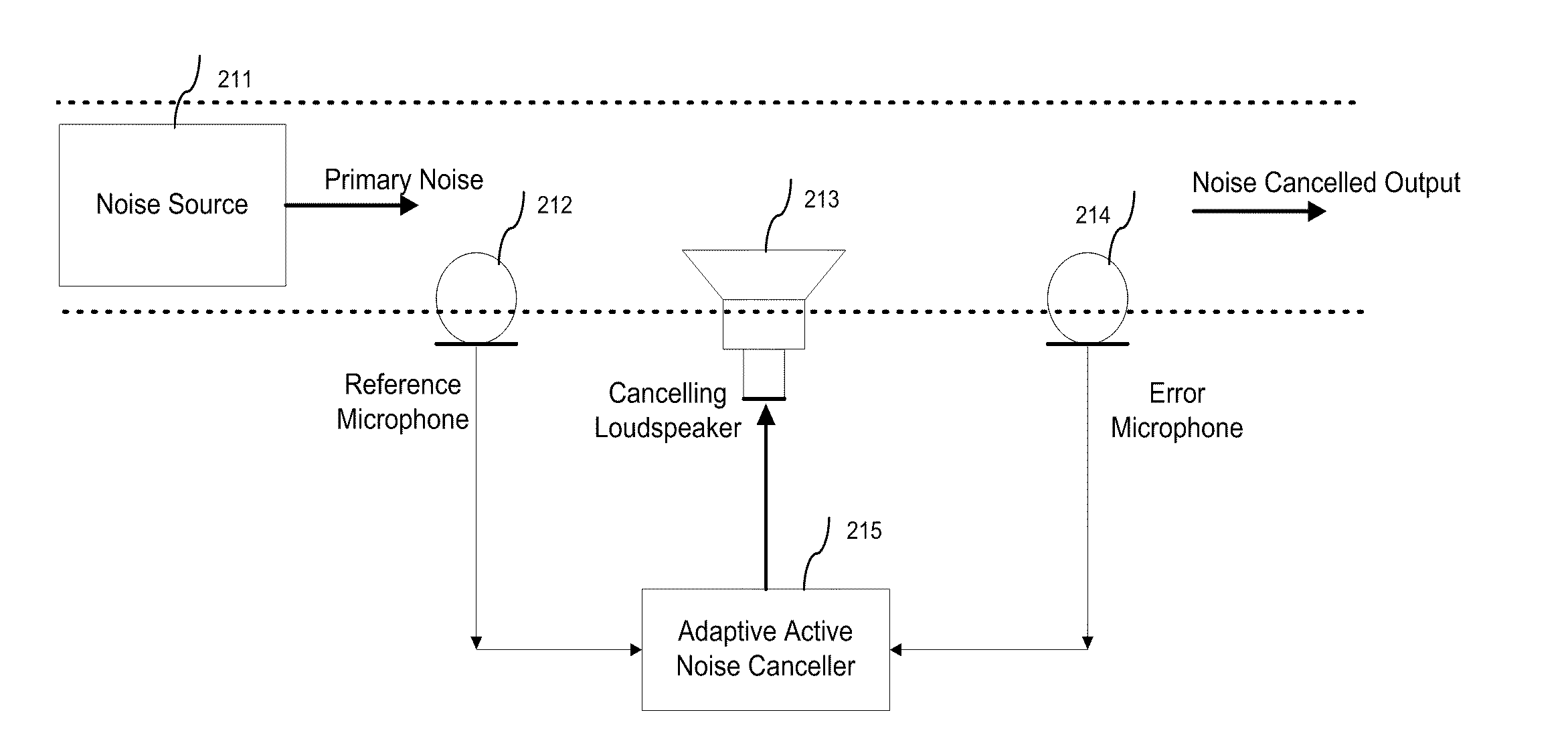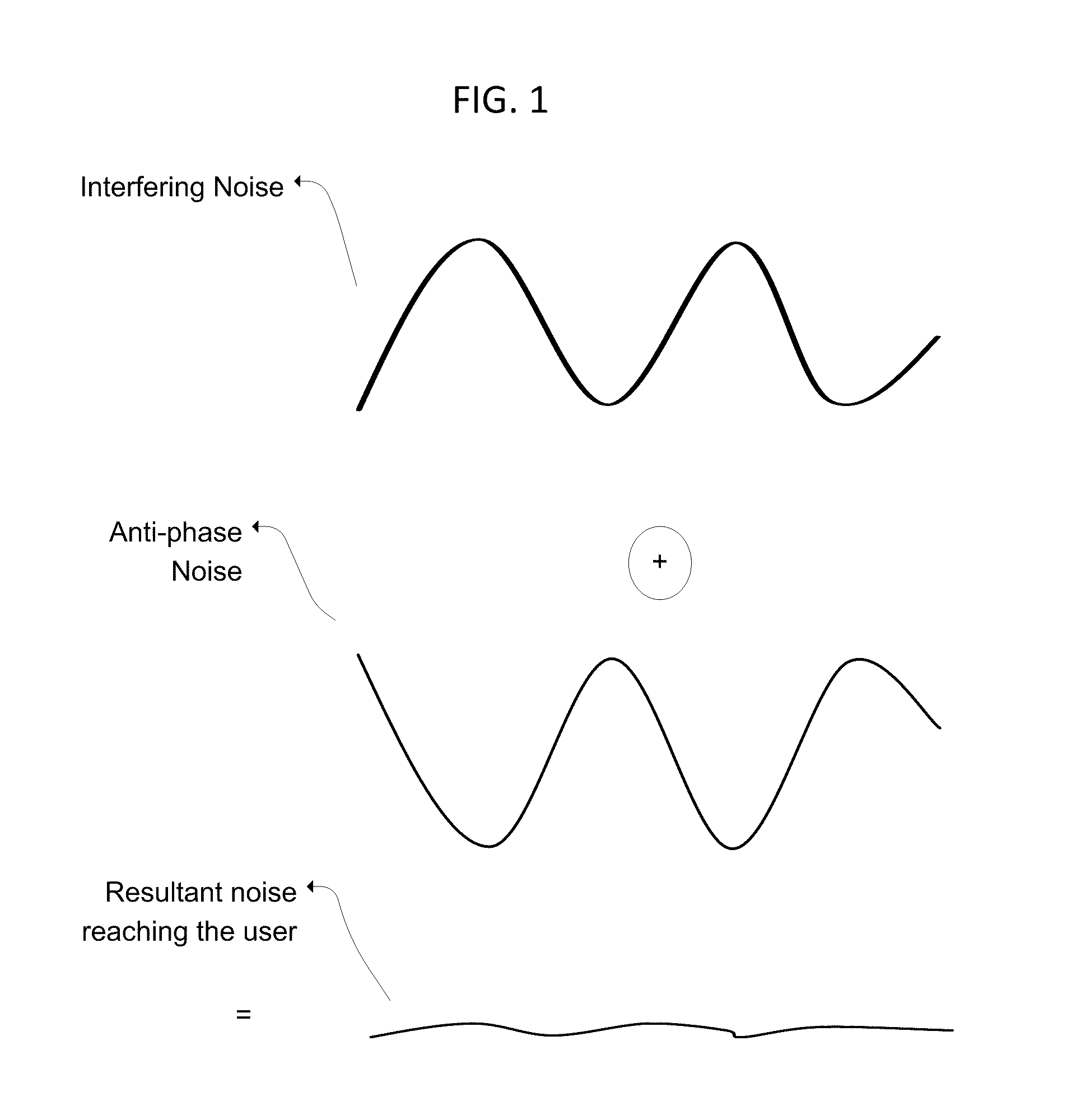Active Noise Control in Mobile Devices
a mobile device and active noise technology, applied in the field of active noise control in mobile devices, can solve the problems of noise generation, limited technology, and small distance between a loud speaker, a reference microphone, etc., and achieve the effect of attenuating or even eliminating the noise portions of the audio spectrum, reducing the cost of computation, and detecting and reducing different levels of background nois
- Summary
- Abstract
- Description
- Claims
- Application Information
AI Technical Summary
Benefits of technology
Problems solved by technology
Method used
Image
Examples
Embodiment Construction
[0034]The following detailed description is directed to certain specific embodiments of the invention. However, the invention can be embodied in a multitude of different ways as defined and covered by the claims and their equivalents. In this description, reference is made to the drawings wherein like parts are designated with like numerals throughout.
[0035]Unless otherwise noted in this specification or in the claims, all of the terms used in the specification and the claims will have the meanings normally ascribed to these terms by workers in the art.
[0036]Ambient noise is a major problem when processing audio signals. It is usually caused by fans, engines, blowers, air conditioners etc. Ambient noise can also be experienced in airplanes, helicopters, cars etc. If untreated, this noise can be annoying at times. Active Noise Cancelling headphones have always been popular among travelers, office workers, music listeners etc. In many cases, it is possible to mitigate it and enhance t...
PUM
 Login to View More
Login to View More Abstract
Description
Claims
Application Information
 Login to View More
Login to View More - R&D
- Intellectual Property
- Life Sciences
- Materials
- Tech Scout
- Unparalleled Data Quality
- Higher Quality Content
- 60% Fewer Hallucinations
Browse by: Latest US Patents, China's latest patents, Technical Efficacy Thesaurus, Application Domain, Technology Topic, Popular Technical Reports.
© 2025 PatSnap. All rights reserved.Legal|Privacy policy|Modern Slavery Act Transparency Statement|Sitemap|About US| Contact US: help@patsnap.com



